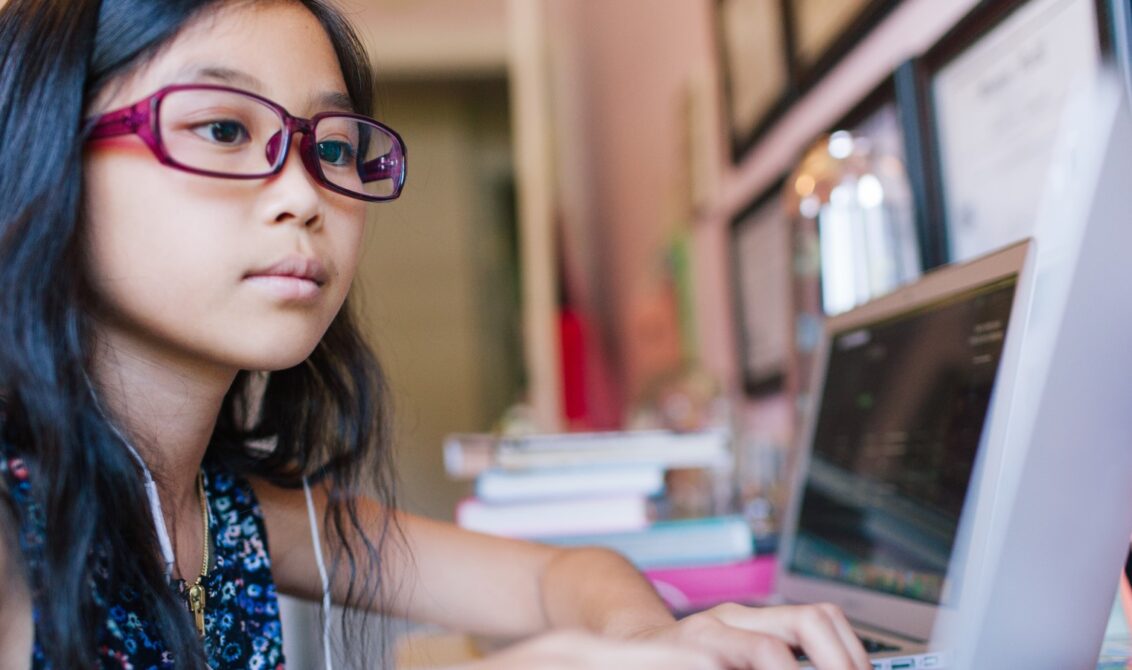
In a post-pandemic world, many of the things we would have only ever considered doing in-person, we now do without thinking online. We are all now so much more open to a combined online/in-person approach to practically every aspect of our lives that it has become normal to us, and the education environment is no exception.
However, mixing traditional and virtual classroom experiences is not a new, pandemic-driven concept. Many institutions – including Pearson Online Academy – were using this approach well before COVID-19 made it necessary, but the approach has flourished in recent times and is fast becoming a more mainstream education model.
The benefits of a flipped classroom
Take for example, the flipped classroom, which has seen increased uptake among teachers over the past few years, but even more so in the past 18 months.
As the name suggests, this learning model essentially flips the traditional ‘class work/homework’ arrangement so that students consume lessons and course content at home via video and online platforms, and then ask questions, engage in discussions and complete exercises (that is, traditional homework activities) via interactive sessions with the teacher and other students in the classroom.
To date, the flipped classroom concept has been most widely adopted in university settings, but there is growing evidence to suggest that secondary students are also benefitting. In one survey, high school and middle school teachers reported that the flipped classroom allowed them to do more of their highest impact work. They could guide discussions, supervise group work, and target support to learners who need it – instead of spending class time explaining concepts in a one-size-fits-all way, which can be too slow for some learners and too fast for others. Meanwhile, each student can learn the concepts at home, at their own pace.
However, teachers did point out that parent/carer involvement in at-home learning, as well as reliable technology, were crucial to a positive experience.
Initially, many students may say they prefer the traditional classroom model and feel they learn more in this way, which is not necessarily the case. Thanks to online learning technology, flipped online sessions can be designed to promote ‘active learning’, which has been shown to increase students’ cognitive efforts, especially if the benefits and learning outcomes of the flipped approach are highlighted to students from the outset. Another study found that the flipped model helped students to deepen their learning by asking more meaningful questions in class, because they had time to develop new knowledge and reflect on the course content at home. In fact, many students from this particular study said they would welcome more flipped lessons in future.
Overall, the combined current research suggests that when flipped classrooms are implemented appropriately, students tend to perform just as well as, if not slightly better than, those in traditional classrooms, and find the experience more engaging than the traditional classroom model.
Is the flipped classroom here to stay?
Online learning was effectively forced upon many teachers and students during the pandemic. This might have been a far-from-ideal breeding ground for positive education outcomes. However, during this time, the flipped classroom model has developed and evolved, integrating technology and interactivity for an optimal learning experience.
A key factor of the flipped model’s success during the pandemic was the effective use of technology to ensure opportunities for relevant interaction and connection between students and teachers, and among students themselves. Senior research scientist Katherine McEldoon PhD says this is a vital part of successfully combining online and in-person teaching methods. This idea is further supported by a 2020 study that highlights how maintaining focused and meaningful interactions in online flipped sessions (via active teacher engagement and tools such as instant chat) was crucial to sustaining students’ engagement levels and academic performance.
But choose wisely! The flipped classroom allows teachers to combine a wide range of digital tools with all the benefits of in-person interaction, to create a rich, multi-media education experience. However, no educational model is perfect for all situations. Good teaching should always involve defining clear learning goals and then identifying the best ways to support and embed that learning.
Pearson Online Academy, for example, includes many features that help to optimise flipped classrooms, such as teacher videos and interactive activities to create a more dynamic active-learning experience than simply reading a textbook, and formative assessment for regular student progress checks. But above all, it is essential to ensure the tools, platforms, activities and interactions used are relevant to the content to be learned.
It is clear that the education landscape has changed more in our post-pandemic world than ever before. And the research shows that innovative and dynamic learning models like the flipped classroom can help meet the needs of our more agile online society.
When considered in line with the latest research and learning, and implemented collaboratively with teachers, students and parents alike, the flipped classroom can have positive outcomes for all involved.
Further reading
The benefits of a flipped classroom for distance learning
Busting the myths that surround online learning
Taking online teaching techniques into the classroom
Frequently asked questions about Pearson Online Schools Services
Sign up to receive our blog updates
Like what you read and want to receive more articles like this direct to your inbox? Subscribe to our blog and we’ll send you a fortnightly digest of the blog posts you may have missed, plus links to free resources to support your teaching and learning.

